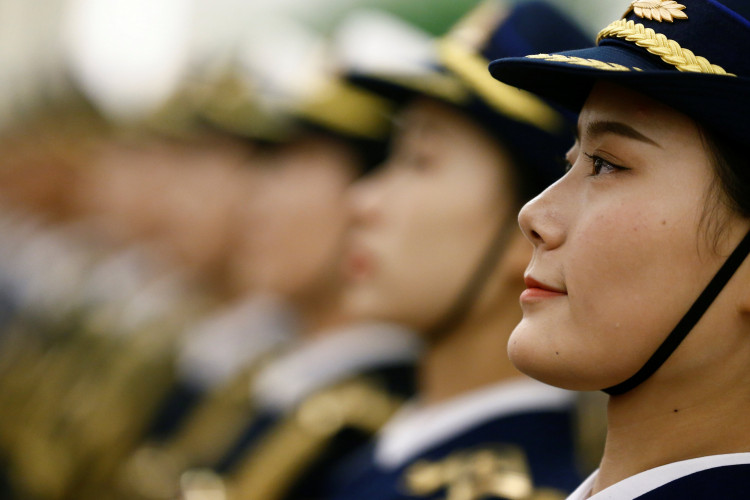China may lead the way in the world of naval superpowers if it successfully becomes the owner of six aircraft carriers.
The National Interest noted that if Beijing purchases six carriers, it will cost China billions but it could also thrust China towards becoming a naval superpower.
The People's Liberation Army (PLA) Navy has already confirmed that it will start capitalizing on "open seas protection" in the near future. While China's Ministry of National Defense has yet to issue a statement on the PLA Navy's plans, spokesperson Ren Guoqiang said in November that development of naval carriers will be grounded on overall strategies for the country.
China currently operates with three regional fleets. Each of these fleets has been made available for the southern, eastern, and northern parts of the country. If six carriers are added to the Chinese navy's equipment by the year 2030, the country may get closer to the U.S. naval army's capabilities.
The Chinese navy has already added a carrier to its fleet but it is still under trial. Dubbed as Shandong, it lacks catapults, unlike U.S. vessels that work both for defense and offense mechanisms. On the other hand, its sister vessel, Liaoning, has been praised by the U.S. Defense Department last year for its air defense capabilities.
On the works is a third naval carrier. Recent reports suggest that the carrier under development sports catapults that U.S. vessels are known for. Upcoming Chinese aircraft carriers may also have improved features, including nuclear-propulsion.
Earlier in December, military expert and TV commentator Song Zhongping told The Global Times that China needs to own five or more aircraft carriers to improve its position in naval power. Another naval expert and retired PLA Navy officer, Wang Yunfei, confirmed that the country needs six carriers to make sure there are available vessels on standby if ever other carriers need maintenance.
Song also predicted that the first nuclear-powered aircraft carrier from China will be unveiled sometime in the middle of 2022 to 2024 while its launch ceremony may be held in 2026 at the latest. Wang added that before 2030, the country will develop two other carriers of the same caliber that Song mentioned.
It is unclear how much China needs to spend to produce carriers that possess the same mechanisms that U.S. and British vessels have. Assuming that it follows the same path the two countries have trod so far, the Chinese navy is expected to drop hundreds of billions.






